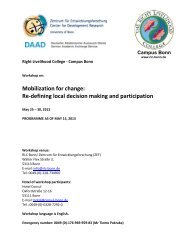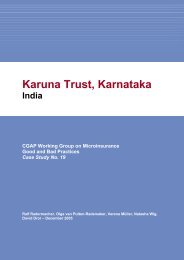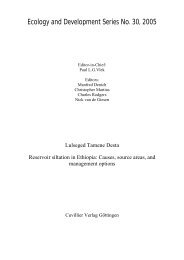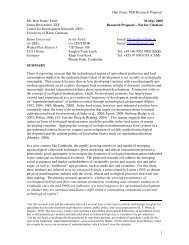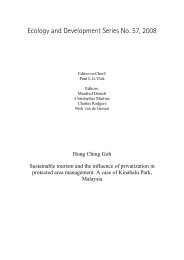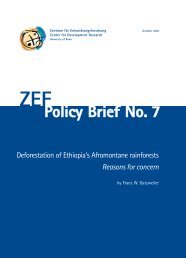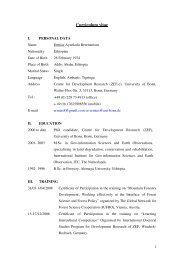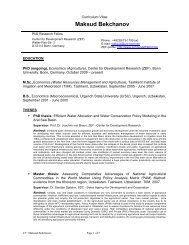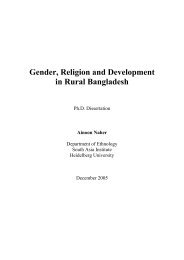ZEF Bonn
ZEF Bonn
ZEF Bonn
You also want an ePaper? Increase the reach of your titles
YUMPU automatically turns print PDFs into web optimized ePapers that Google loves.
Water-use optimisation is the third integrative activity in the project. Water use is<br />
economically optimised subject to hydrological and institutional constraints. Water<br />
optimisation will be the nucleus of the actual decision-support system forming the<br />
final outcome of the project. Because of its importance, the feasibility of linking<br />
hydrological and institutional functions was tested in a model early on in the project.<br />
We used a mathematical programming (or optimisation) model in which an<br />
objective function is maximised. The constraints under which water productivity is<br />
optimised can be hydrological and institutional in nature. This early model helps to<br />
define precise data needs in terms of water supply and demand. The model implements<br />
existing integrative knowledge and will gradually be enriched by updated<br />
information and new primary data. Presently, the model optimises over different<br />
water uses at thirteen nodes in the river network. The innovation is that optimisations<br />
can be carried out at different levels of aggregation. The optimisation model<br />
has active links to a large set of sub-models that contain auxiliary information such<br />
as institutional development scenarios and crop-water demand calculations. The<br />
present model helps to assess the economic and hydrologic tradeoffs between competing<br />
water uses, taking into account different forms of irrigation and energy sources<br />
other than hydropower.<br />
Research<br />
Safe water source:<br />
woman pumping<br />
water from a bore<br />
hole in Ghana.<br />
39



